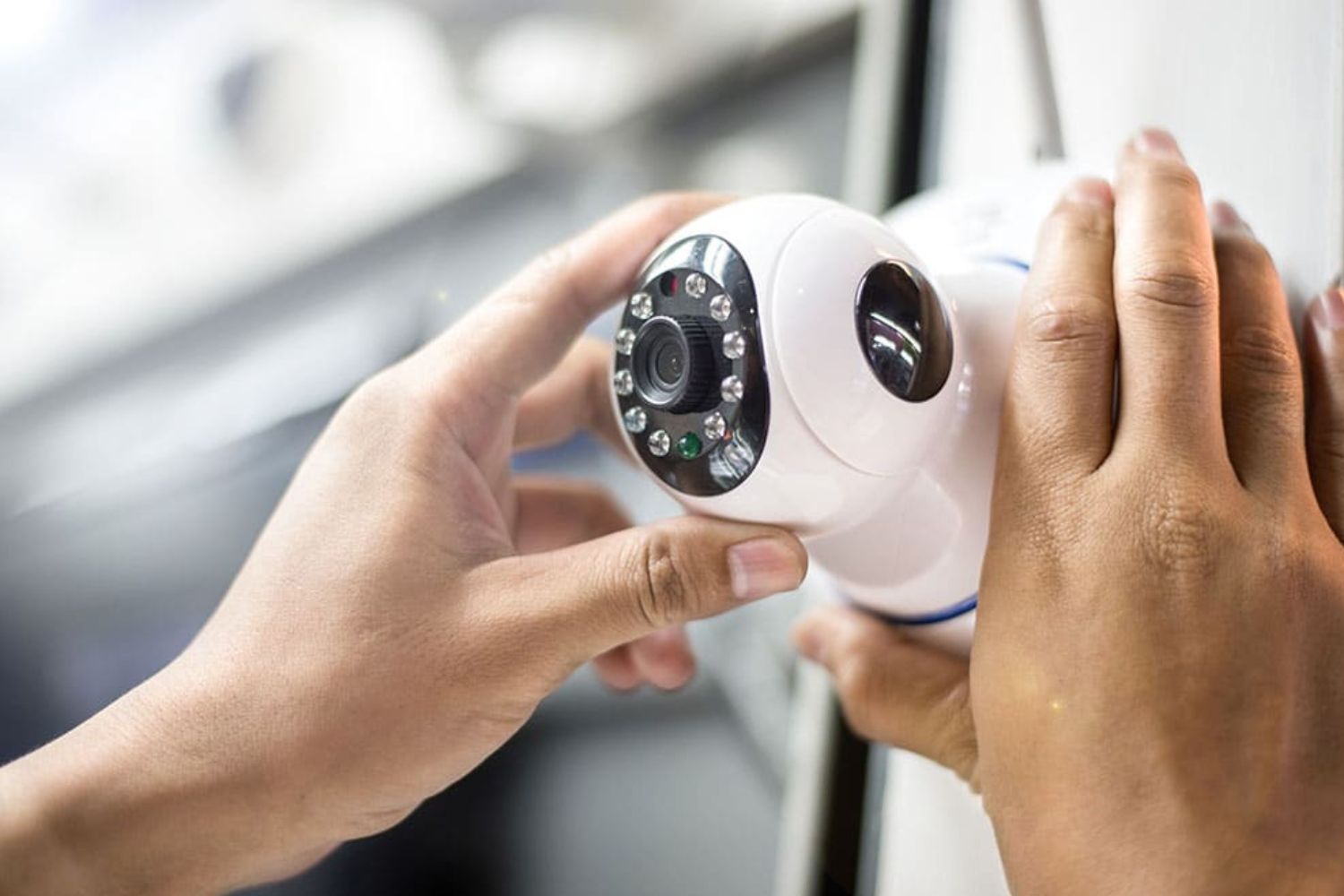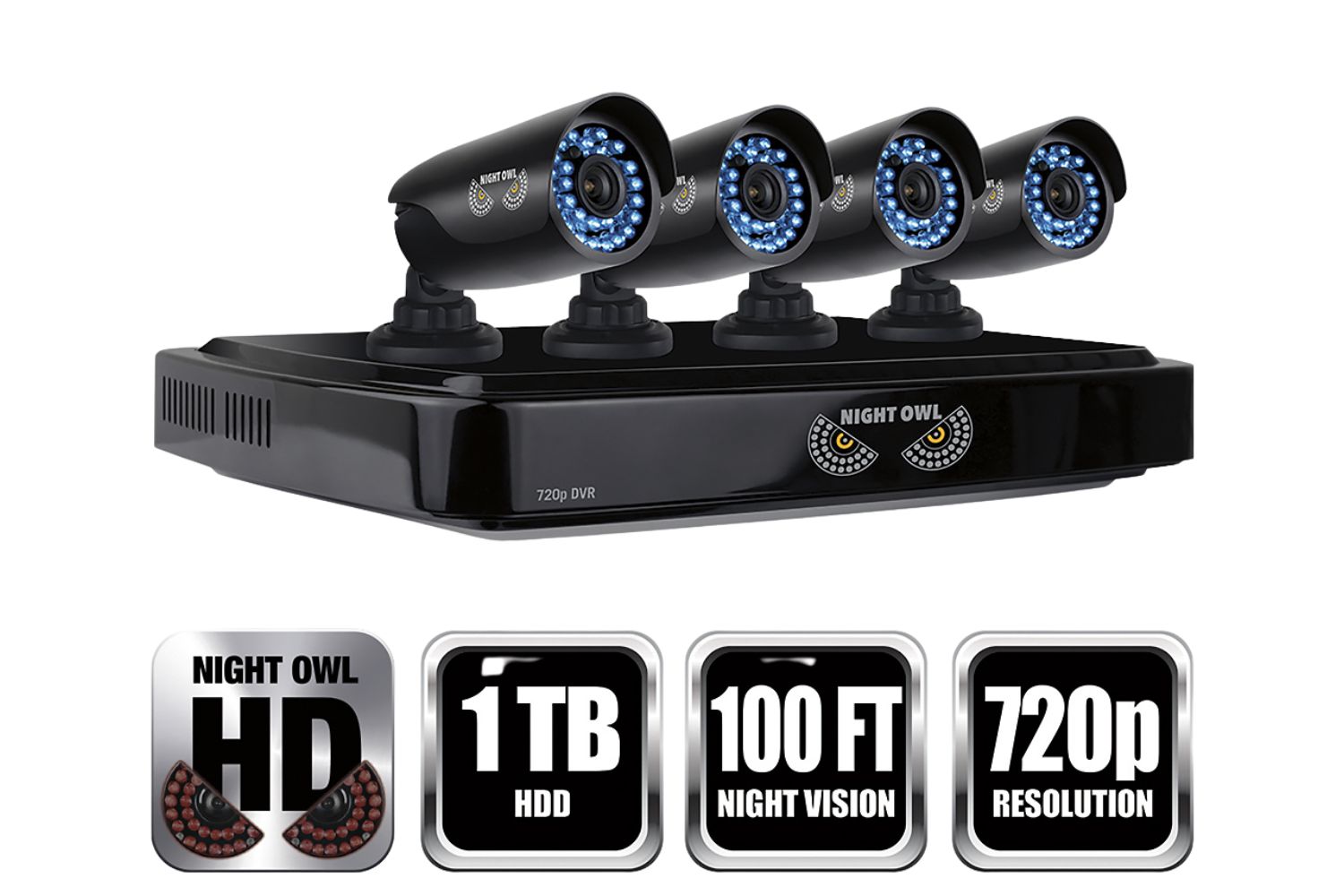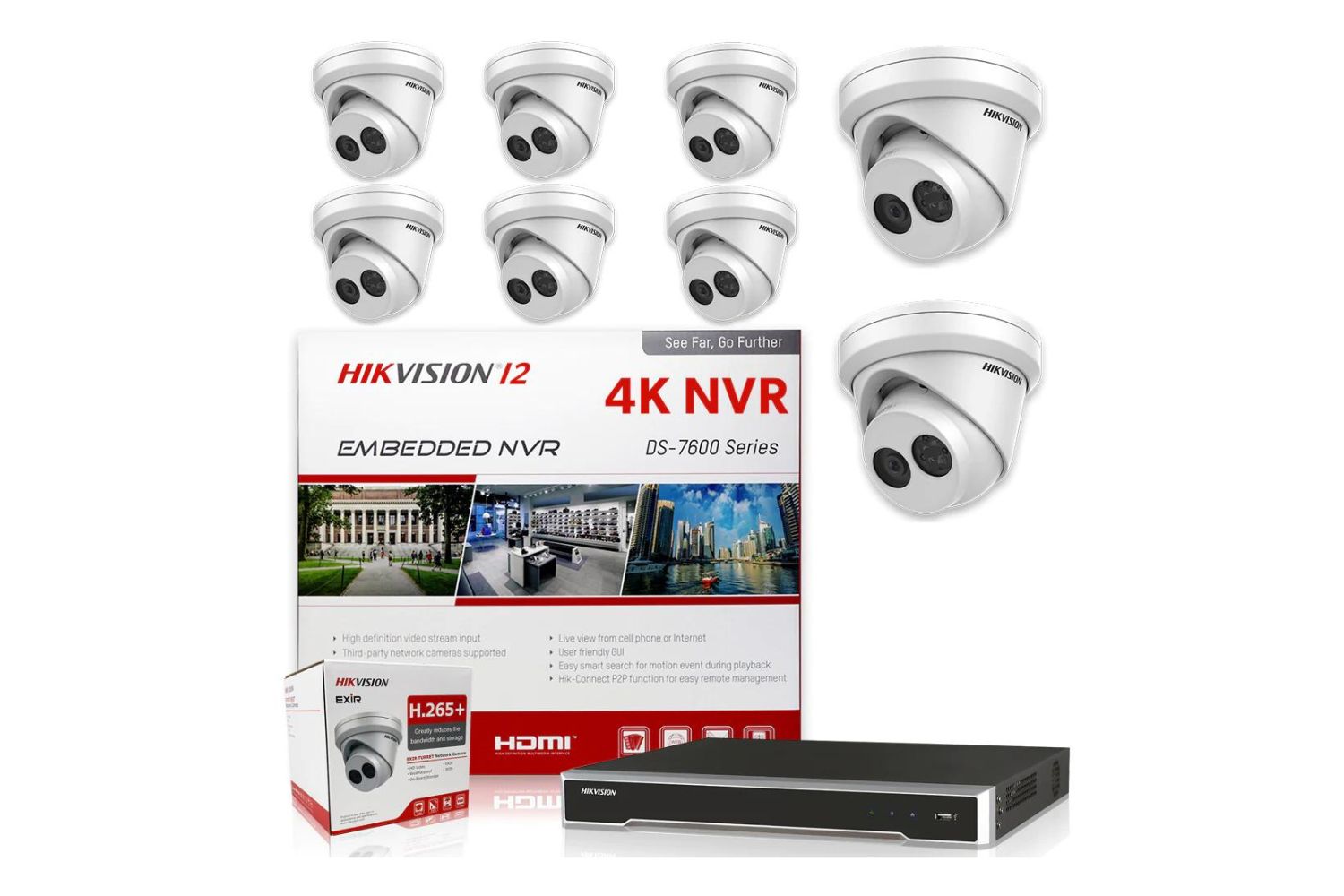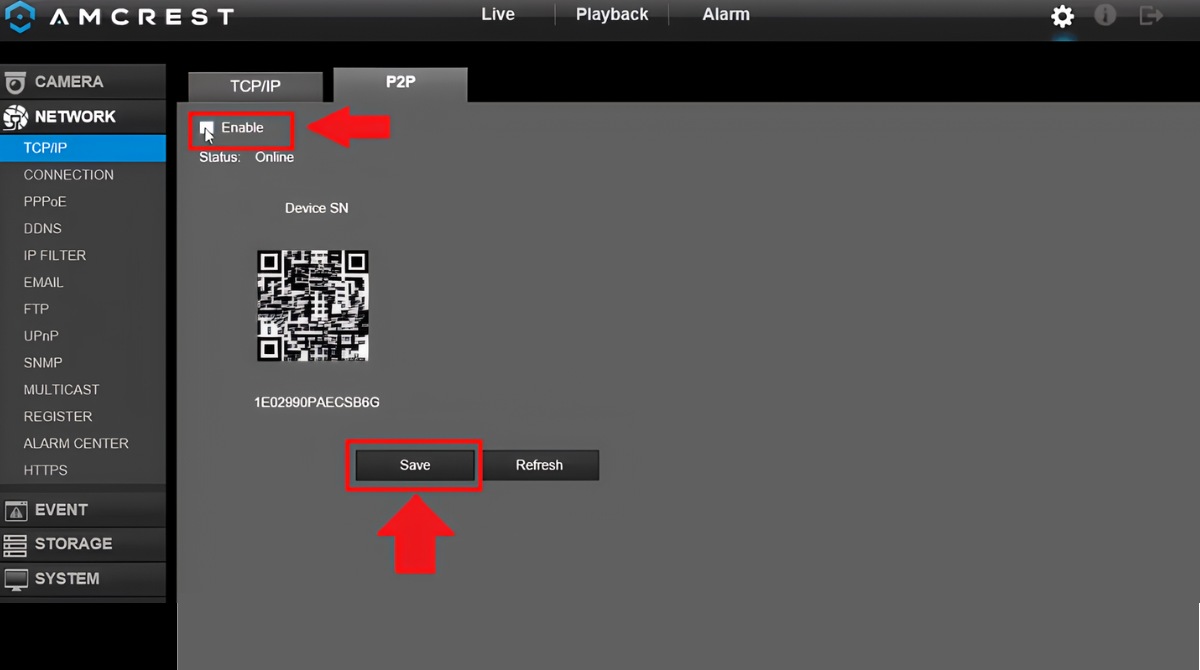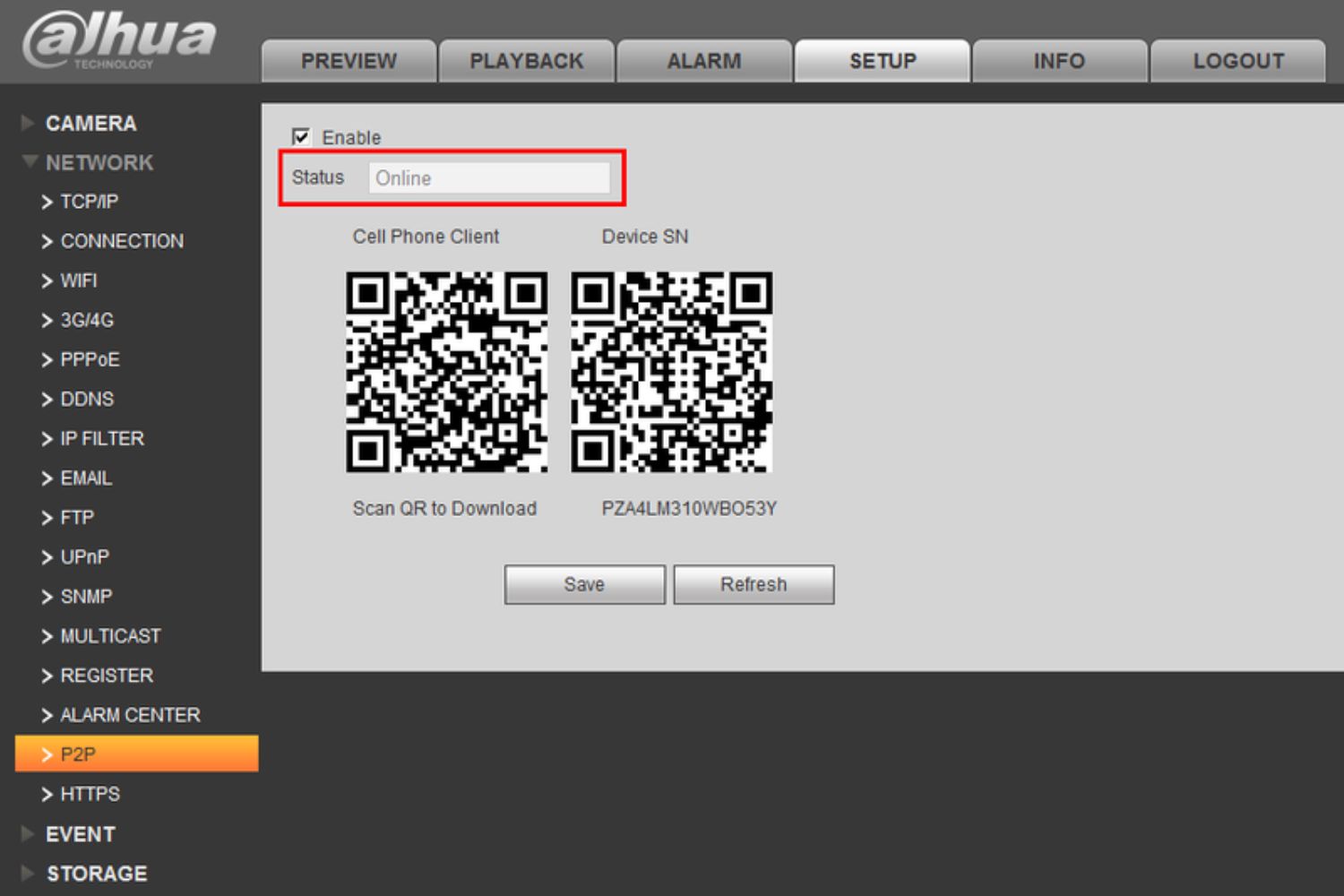Introduction
P2P camera, which stands for Peer-to-Peer camera, is a cutting-edge technology that has revolutionized the way we monitor and secure our homes, offices, and other premises. With the rise of smart homes and the increasing demand for video surveillance, P2P cameras have become an essential tool in ensuring the safety and security of our surroundings.
A P2P camera is a type of IP camera that utilizes a peer-to-peer network connection to transmit video and audio data. This eliminates the need for a central server or cloud-based storage system, allowing the camera to directly connect to the user’s devices, such as smartphones or tablets, for real-time viewing and remote access.
Unlike traditional IP cameras that require complex configuration and port forwarding, P2P cameras offer a simplified setup process, making them accessible to users with limited technical knowledge. This plug-and-play functionality is one of the key factors that have contributed to the popularity of P2P cameras in recent years.
In this article, we will delve deeper into the world of P2P cameras, exploring how they work, the benefits they offer, and the features to look for when choosing the right P2P camera for your needs. We will also provide practical tips on setting up and using a P2P camera effectively, as well as discussing any potential drawbacks you should be aware of.
Whether you’re a homeowner looking to enhance your home security or a business owner wanting to monitor your premises, understanding the concept of P2P cameras is essential in order to make an informed decision. So, let’s dive in and discover the fascinating world of P2P cameras and how they can transform your surveillance experience.
What is P2P Camera?
A P2P camera, also known as a Peer-to-Peer camera, is a type of IP camera that allows for direct communication between the camera and the user’s devices without the need for a central server or cloud-based storage system. It utilizes a peer-to-peer network connection, enabling real-time streaming and remote access to the camera’s video and audio feeds.
Unlike traditional IP cameras that require complex setup and configuration, P2P cameras offer a simplified plug-and-play functionality. This means that users with limited technical knowledge can easily set up and use these cameras without the need for any network expertise.
One of the main advantages of P2P cameras is their ability to establish a direct connection between the camera and the user’s devices, such as smartphones, tablets, or computers. This eliminates the need for port forwarding or dynamic DNS setup, which can be complicated and time-consuming. With a P2P camera, users can simply connect the camera to their Wi-Fi network and instantly access the camera’s live feed from anywhere in the world.
P2P cameras also offer enhanced security features. Since the camera does not rely on a central server, there is no single point of failure that could potentially compromise the security of the camera’s footage. Additionally, P2P cameras often incorporate advanced encryption protocols to ensure that the data transmitted between the camera and the user’s devices remains secure and private.
Another important aspect of P2P cameras is their versatility. These cameras can be used for various purposes, such as home surveillance, office monitoring, baby monitoring, or even as a pet camera. They typically come with features like motion detection, night vision, two-way audio, and remote pan/tilt/zoom capabilities, allowing users to customize their surveillance experience according to their specific needs.
In summary, a P2P camera is an innovative IP camera that enables direct communication between the camera and the user’s devices through a peer-to-peer network connection. With its simplified setup process, enhanced security features, and versatile functionality, a P2P camera is an ideal choice for those looking for a user-friendly and reliable surveillance solution.
How Does P2P Camera Work?
Understanding how a P2P camera works is essential to grasp its unique capabilities and advantages. At its core, a P2P camera utilizes a peer-to-peer network connection to establish direct communication between the camera and the user’s devices without the need for a central server or cloud-based storage.
When setting up a P2P camera, the camera itself acts as a server, broadcasting its IP address, port number, and other necessary information to nearby devices on the same local network. The user’s devices, such as smartphones or tablets, can then detect and connect to the camera using this information.
Once connected, the P2P camera and the user’s devices establish a direct point-to-point connection. This connection allows for real-time streaming of the camera’s video and audio feeds, enabling the user to monitor and access the camera remotely.
One of the key advantages of a P2P camera is its ability to bypass the need for complex network configurations, such as port forwarding or dynamic DNS setup. Instead, P2P technology enables seamless connectivity by utilizing various networking protocols and techniques, such as Universal Plug and Play (UPnP), Network Address Translation (NAT), and hole punching.
UPnP is a network protocol that allows devices to automatically discover and communicate with each other on a local network. It simplifies the process of establishing a connection between the P2P camera and the user’s devices by automatically handling the necessary network configurations.
NAT, on the other hand, is a technique used to translate private IP addresses into public IP addresses. It enables devices on a local network to share a single public IP address, allowing multiple devices, including the P2P camera and user’s devices, to communicate with external networks.
Hole punching is a method used to establish a direct connection between devices located behind NAT without relying on a central server. It involves sending and receiving special packets that create temporary openings, or “holes,” in NAT devices, allowing the camera and user’s devices to establish a direct connection.
Overall, P2P camera technology leverages these networking protocols and techniques to create a direct and secure connection between the camera and the user’s devices. By eliminating the need for a central server or cloud-based storage, P2P cameras offer a streamlined and user-friendly experience for remote monitoring and access.
Benefits of Using P2P Camera
Using a P2P camera for your surveillance needs offers a range of benefits that make it an attractive choice for both residential and commercial users. Let’s explore some of the key advantages of using a P2P camera:
- Easy Setup: One of the main benefits of P2P cameras is their simple and hassle-free setup process. Unlike traditional IP cameras that may require complex network configurations, P2P cameras offer a plug-and-play functionality. This means that even users with limited technical knowledge can set up and start using the camera within minutes.
- Direct Connection: P2P cameras establish a direct connection between the camera and the user’s devices, such as smartphones or tablets. This direct connection enables real-time streaming and remote access to the camera’s video and audio feeds without relying on a central server. With a P2P camera, users can monitor their premises from anywhere in the world using their mobile devices.
- Enhanced Security: P2P cameras often come with advanced encryption protocols to ensure the security and privacy of the data transmitted between the camera and the user’s devices. They eliminate the need for a central server, reducing the risk of unauthorized access or data breaches. Additionally, P2P cameras allow users to set up password protection and access control to further enhance the security of their surveillance system.
- Flexible and Scalable: P2P cameras offer flexibility and scalability in terms of the number of cameras that can be connected and monitored. Users can easily add or remove cameras from their network without the need for additional complicated setup processes. This makes it convenient for users who want to expand their surveillance system over time or adjust it according to their changing needs.
- Remote Accessibility: With a P2P camera, users can access their camera’s live feed and recorded footage remotely through their mobile devices or computers. This allows for constant monitoring of the premises, providing peace of mind for homeowners and business owners alike. Users can also receive instant alerts or notifications via mobile apps when motion is detected or any other predefined events occur.
- Cost-Effective: P2P cameras offer a cost-effective solution for video surveillance. They eliminate the need for expensive central servers or cloud-based storage systems, reducing upfront equipment costs and ongoing subscription fees. Furthermore, the simplified setup process and ease of use eliminate the need for professional installation, saving additional service fees.
In summary, the benefits of using a P2P camera include easy setup, direct connection, enhanced security, flexibility and scalability, remote accessibility, and cost-effectiveness. These advantages make P2P cameras a smart choice for individuals and businesses looking for a convenient, secure, and reliable surveillance solution.
Features to Look for in a P2P Camera
When choosing a P2P camera for your surveillance needs, it is important to consider certain key features that will enhance the functionality and effectiveness of the camera. Here are some essential features to look for when selecting a P2P camera:
- Video Quality: The video quality of a P2P camera is a crucial factor to consider. Look for a camera that offers high-definition (HD) or even ultra-high definition (UHD) resolution for clear and detailed footage. Higher pixel count and the ability to adjust video settings can significantly improve the overall image quality.
- Night Vision: For round-the-clock monitoring, choose a P2P camera with built-in infrared (IR) LEDs or other night vision capabilities. This ensures that the camera can capture clear footage in low-light or completely dark conditions, allowing you to effectively monitor your premises at any time.
- Wide Angle Lens: A wide-angle lens allows for a broader field of view, ensuring that the camera can cover a larger area with fewer blind spots. Look for a P2P camera with a wide-angle lens, typically measured in degrees, to maximize the coverage of your surveillance area.
- Motion Detection: Motion detection is a crucial feature that alerts you when any movement is detected in the camera’s field of view. Look for a P2P camera with customizable motion detection settings, allowing you to adjust the sensitivity, detection zones, and notification preferences according to your specific needs.
- Two-Way Audio: Two-way audio capability enables communication between the camera and your mobile device or computer, allowing you to listen and talk through the camera. This feature is useful for remote interaction and can be beneficial for home monitoring, pet surveillance, or even for businesses to communicate with customers or employees on-site.
- Remote Pan/Tilt/Zoom: Some P2P cameras offer remote pan, tilt, and zoom functionality, allowing you to adjust the camera’s position and zoom in or out remotely. This feature provides added flexibility in monitoring and enables you to focus on specific areas or objects of interest within the camera’s range.
- Cloud Storage or SD Card Support: Consider whether the P2P camera offers cloud storage options or supports local storage via an SD card. Cloud storage allows for convenient access and retrieval of footage from anywhere, while local storage provides a physical backup option in case of internet connectivity issues.
- Mobile App Integration: Look for a P2P camera that offers a user-friendly mobile app for seamless control and management. The app should provide features such as live viewing, recording playback, motion alerts, and remote configuration options to enhance your overall surveillance experience.
- Compatibility and Integration: Ensure that the P2P camera is compatible with your existing devices and surveillance ecosystem. It should integrate well with your network setup, allowing for easy connection and compatibility with other devices or video management systems you may have.
By considering these features when selecting a P2P camera, you can ensure that you choose a camera that meets your specific surveillance requirements and provides optimal performance and functionality.
Choosing the Right P2P Camera for Your Needs
When it comes to selecting the right P2P camera for your surveillance needs, it’s important to consider several factors to ensure that the camera meets your specific requirements. Here are some key considerations to keep in mind:
- Intended Use: Determine the purpose of your surveillance system. Are you looking to monitor your home, office, or other specific areas? This will help you determine the type and number of cameras you will need, as well as the specific features required for effective monitoring.
- Image Quality: Assess the quality of the camera’s video and image capabilities. Look for cameras with high-resolution video, preferably HD or UHD, for clear and detailed footage.
- Field of View: Consider the size of the area you want to monitor and choose a camera with an appropriate field of view. A wider field of view will cover more area with fewer blind spots.
- Connectivity Options: Determine how you want to access your camera’s feed. Look for cameras that offer Wi-Fi connectivity for easy installation and remote access via mobile devices or computers.
- Security Features: Ensure that the camera provides adequate security measures such as encryption protocols and password protection to safeguard your surveillance footage.
- Storage Options: Consider whether you prefer storing your footage locally on an SD card or using cloud storage options. Choose a camera that aligns with your storage preferences.
- Scalability: If you anticipate expanding your surveillance system in the future, select a camera that offers scalability to accommodate additional cameras.
- User-Friendly Interface: Look for cameras with intuitive user interfaces and mobile apps that offer easy configuration and control of the camera’s settings. This will make it simpler to operate and manage your surveillance system.
- Brand Reputation and Support: Research the brand reputation and customer reviews of the camera you’re considering. Choose a reputable brand that offers reliable customer support and regular firmware updates to ensure ongoing functionality and security.
- Budget: Set a budget for your surveillance system and look for cameras that offer the best combination of features, performance, and affordability within your price range.
By carefully evaluating these factors and comparing different P2P camera models, you can select the right camera that suits your surveillance needs and provides reliable performance for monitoring and securing your premises.
Setting Up a P2P Camera
Setting up a P2P camera is relatively straightforward, thanks to its plug-and-play functionality. Here are the general steps involved in setting up a P2P camera:
- Choose the Camera Location: Determine the optimal location for your P2P camera. Consider factors such as the area you want to monitor, accessibility of power outlets, and the camera’s field of view.
- Ensure Proper Power Supply: Connect the camera to a power source using the provided power adapter or PoE (Power over Ethernet) if supported. Ensure a stable power supply to keep the camera functioning without interruptions.
- Connect to Your Network: Most P2P cameras support Wi-Fi connectivity. Use the camera’s mobile app or a web browser to connect the camera to your Wi-Fi network. Follow the manufacturer’s instructions for the specific camera model.
- Register and Pair the Camera: Create an account on the camera’s mobile app or web portal. Register the camera by providing the necessary details, such as the camera’s unique ID or serial number. Follow the instructions to pair the camera with your account.
- Configure Settings: Access the camera’s settings through the mobile app or web interface. Customize settings such as resolution, motion detection sensitivity, recording options, and storage preferences according to your needs.
- Test and Fine-Tune: After configuration, test the camera’s functionality by accessing the live feed on your mobile device or computer. Make any necessary adjustments to the camera’s position, field of view, or motion detection settings to optimize performance.
- Configure Remote Access: To access the camera remotely, ensure that the camera is set up to allow remote access via the internet. This may involve enabling port forwarding or setting up a DDNS (Dynamic Domain Name System) if required. Consult the camera’s documentation or contact customer support for assistance.
- Install Mobile Apps and Software: Install the camera’s mobile app on your smartphone or tablet to access the camera’s feed and settings on the go. If applicable, download and install any necessary software for accessing the camera on your computer.
It’s worth noting that specific setup procedures may vary depending on the P2P camera model and manufacturer. Always refer to the camera’s user manual and guidelines provided by the manufacturer for detailed instructions on setting up and configuring your specific camera model.
Tips for Using P2P Camera Effectively
To maximize the effectiveness of your P2P camera and ensure optimal surveillance performance, consider the following tips:
- Position the Camera Strategically: Choose the camera placement carefully to cover the areas you want to monitor effectively. Position it at a height and angle that provides a clear view of the targeted area while minimizing obstructions.
- Optimize Motion Detection: Adjust the motion detection settings to reduce false alerts while ensuring that important events are captured. Set detection zones and sensitivity levels to focus on relevant areas and minimize irrelevant motion triggers like trees or passing vehicles.
- Regularly Update Firmware: Keep the camera’s firmware updated to ensure optimal performance and security. Manufacturers often release firmware updates with bug fixes and new features to enhance camera functionality.
- Maintain Adequate Lighting: Ensure there is sufficient lighting for the camera to capture clear footage. In low-light situations, consider adding additional lighting sources or opt for a camera with built-in infrared (IR) LEDs for reliable night vision capability.
- Set Strong Passwords: Protect your camera’s access by using strong alphanumeric passwords, along with enabling additional security measures such as two-factor authentication (2FA) if supported.
- Regularly Check Camera Health: Monitor the camera’s health status, such as Wi-Fi signal strength and power status, to ensure continuous and reliable operation. Address any connectivity issues promptly to minimize downtime.
- Secure Your Network: Secure your Wi-Fi network by using encryption methods such as WPA2. Be cautious with public Wi-Fi networks as they may not provide the required level of security for accessing your camera remotely.
- Regularly Review Footage: Periodically review recorded footage to identify any suspicious activities or events. This can be helpful for investigating incidents and providing evidence if needed.
- Test Remote Access: Regularly test the camera’s remote access functionality to ensure that you can view the live feed and recorded footage properly when accessing it from outside your local network.
- Maintain Camera Cleanliness: Keep the camera lens and housing clean from dirt, dust, and debris to avoid obstructed view or compromised image quality. Regularly wipe the lens with a soft cloth to remove any smudges or fingerprints.
By implementing these tips, you can enhance the overall effectiveness and performance of your P2P camera, ensuring reliable surveillance and peace of mind.
Potential Drawbacks of P2P Camera
While P2P cameras offer many benefits, it’s important to consider potential drawbacks to make an informed decision. Here are some possible disadvantages to be aware of:
- Dependence on Internet Connection: P2P cameras heavily rely on a stable internet connection for remote access and live viewing. Any disruptions in the internet connection can result in limited or no access to the camera’s feed.
- Bandwidth Consumption: P2P cameras transmit video and audio data over the internet, which requires a certain amount of bandwidth. If you have multiple cameras or limited internet bandwidth, it may affect other online activities and result in slower internet speeds.
- Privacy Concerns: Since P2P cameras transmit data over the internet, there may be potential privacy concerns. It is important to choose a reputable manufacturer that prioritizes user privacy and implements robust encryption measures to protect your data.
- Limited Storage Options: Some P2P cameras may have limited storage options, especially those that rely solely on cloud storage. This means you may have to pay subscription fees for additional storage or rely on a limited amount of built-in storage or external storage options.
- Lack of Continuous Recording: Depending on the camera model and settings, P2P cameras may not offer continuous recording. Instead, they typically rely on motion detection to trigger recording. This can result in missed events if the camera fails to detect certain movements.
- Vendor Lock-In: Choosing a specific P2P camera brand may limit your options for expanding or upgrading your surveillance system in the future, as different brands may not always be compatible with each other.
- Technical Limitations: P2P cameras may have certain technical limitations such as limited field of view, lower video quality compared to wired cameras, or difficulty in adjusting camera settings beyond basic configurations.
- Reliance on Mobile Apps: Most P2P cameras require a mobile app for remote access and control. While this offers convenience, it may limit your access options, especially if you prefer using a web interface or integrations with third-party software.
- Potential Vulnerabilities: Like any network-connected device, P2P cameras can be vulnerable to hacking or unauthorized access. It’s essential to regularly update firmware, use strong passwords, and employ additional security measures to minimize these risks.
It’s important to carefully weigh these potential drawbacks against the benefits and consider your specific surveillance requirements when deciding whether a P2P camera is the right choice for you.
Conclusion
P2P cameras have transformed the way we approach surveillance, offering a simplified and convenient solution for monitoring our homes, offices, and other premises. With easy setup, direct connectivity, and enhanced security features, P2P cameras provide an effective way to keep a watchful eye on our surroundings.
By utilizing a peer-to-peer network connection, P2P cameras eliminate the need for complex network configurations and provide real-time access to video and audio feeds from anywhere in the world. With features such as motion detection, night vision, two-way audio, and remote pan/tilt/zoom capabilities, users have the flexibility to customize their surveillance according to their specific needs.
While there are potential drawbacks to consider, such as dependence on internet connectivity, privacy concerns, and limited storage options, these can be mitigated by choosing reputable brands, implementing security measures, and understanding the technical limitations of the camera.
When selecting a P2P camera, it’s important to consider your intended use, the image quality, the camera’s field of view, connectivity options, security features, storage preferences, scalability, user-friendliness, brand reputation, and budget. Evaluating these factors ensures that you choose the right camera that meets your specific surveillance requirements.
With the proper setup and utilization of a P2P camera, users can effectively monitor their premises, receive real-time alerts, and have peace of mind knowing that their property is secure. Regular maintenance, firmware updates, and adherence to best practices, such as setting up strong passwords and securing your network, can further optimize the camera’s performance.
In conclusion, the advent of P2P cameras has opened up new possibilities in the field of video surveillance. By considering the features, potential drawbacks, and tips for effective usage, individuals and businesses can leverage the power of P2P cameras to enhance their security and monitoring capabilities.







